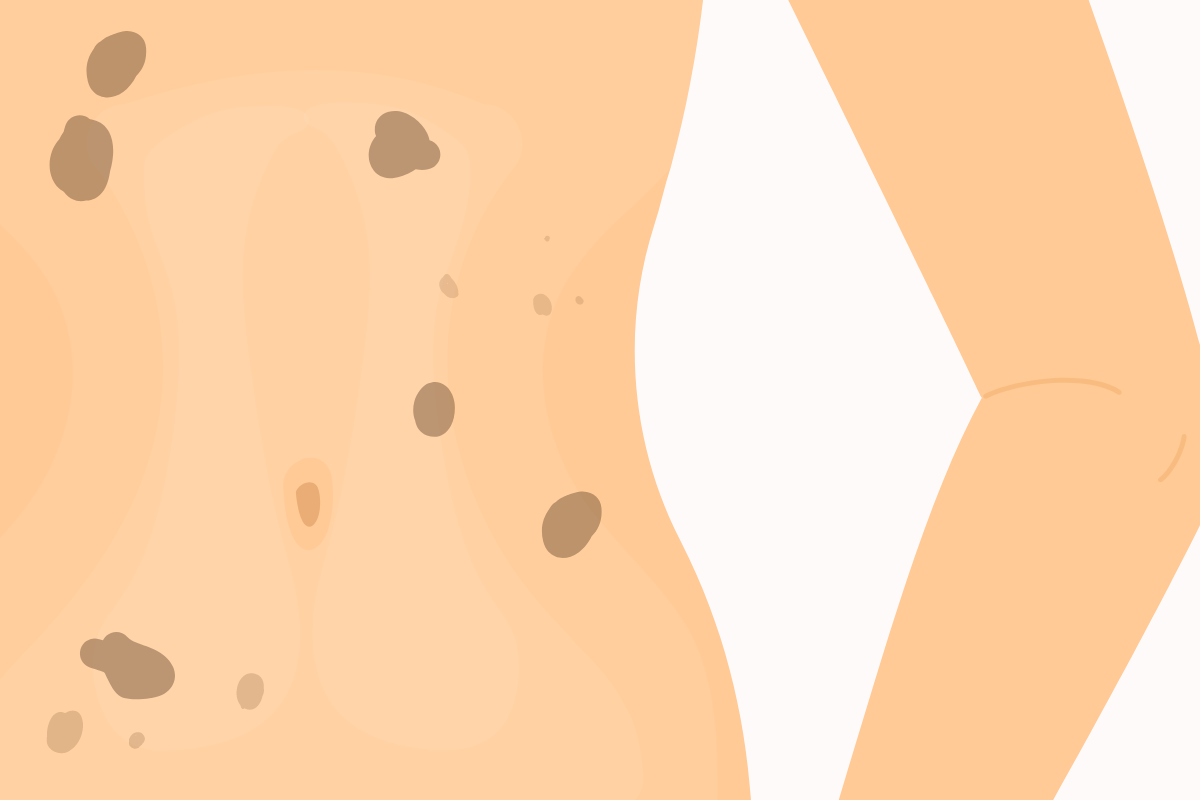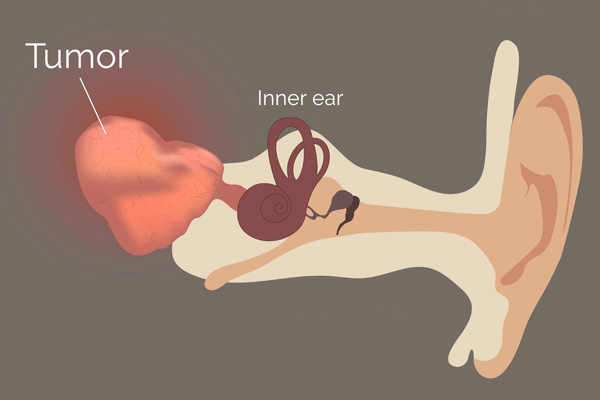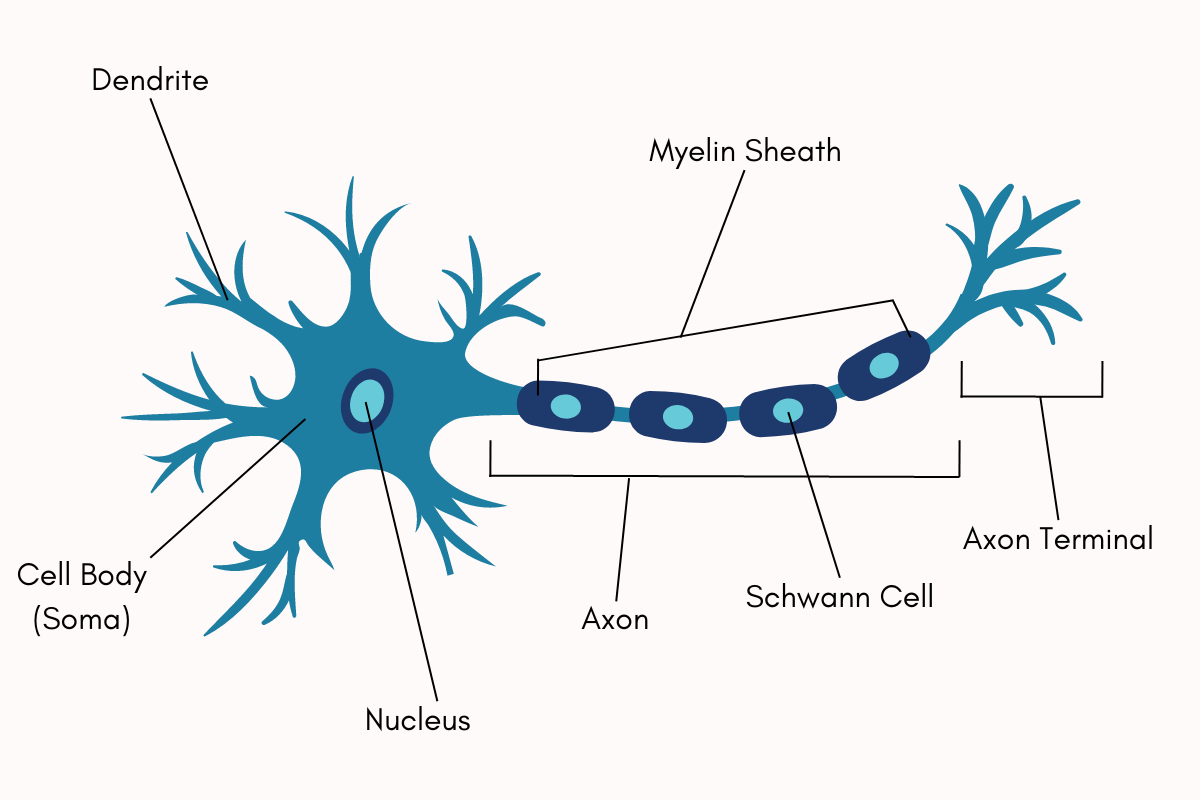What is NF?

Neurofibromatosis, pronounced neuro-fibroma-tosis, is a group of genetic disorders of the nervous system that causes tumors to form on the nerves anywhere in or on the body at any time.
NF affects all races, all ethnic groups and both sexes equally. NF affects more people worldwide than cystic fibrosis and muscular dystrophy combined!
There are three types of neurofibromatosis—neurofibromatosis type 1 (NF1), neurofibromatosis type 2-related schwannomatosis (NF2), and schwannomatosis (SWN).
About NF1

Neurofibromatosis type 1 causes unchecked growth of tissue along the nerves. This can put pressure on affected nerves and cause pain, nerve damage, and loss of function in the area served by the nerve. Problems with sensation or movement can occur, depending on the nerves affected. The condition can be very different from person to person, even among people in the same family who have the NF1 gene pathogenic variant.
The “coffee-with-milk” (café-au-lait) spots on the skin are the hallmark symptom of neurofibromatosis. Although many healthy people have 1 or 2 small café-au-lait spots, adults with 6 or more spots greater than 1.5 cm in diameter are likely to have neurofibromatosis. People whose only symptom is 6 or more CAL macules would need genetic testing to distinguish whether they have Legius Syndrome or NF1. The diagnostic criteria for Legius syndrome are 1) 6 or more CAL macules, 2) no other symptoms of NF1 except potential freckling in the underarm or groin, and 3) genetic testing for SPRED1 pathogenic variants. In some people, as often seen in children, these spots may be the only symptom, but the patient would still need to have genetic testing to get a confirmed diagnosis of NF1.
Diagnostic Criteria for NF1
Two or more of the following:
- Six or more café-au-lait spots 5 cm or larger in post-pubertal individuals, 0.5 cm or larger in pre-pubertal individuals
- Two or more neurofibromas of any type or one or more plexiform neurofibroma
- Freckling in the underarm or groin
- Optic glioma (tumor of the optic pathway)
- Two or more Lisch nodules on the eye (benign iris hamartomas)
- A distinctive bony lesion: dysplasia of the sphenoid bone or dysplasia or thinning of long bone cortex
- A parent with NF1
Effects of NF1
Neurofibromatosis type 1 (NF1) is an autosomal dominant genetic disorder that causes tumors to grow on the covering of the nerves anywhere in the body at any time. The disorder affects 1 in 2,500 to 3,000 males and females of all races and ethnic groups in the US. The NF-1 gene is located on chromosome 17. About half of people with NF1 inherit the condition form their parent, and the other half are the first in the families to have NF1.
Other symptoms may include:
- Large nerve tumors called plexiform neurofibromas. Some may feel soft, have a dark color, and spread under the surface of the skin, while others are internal and not visible.
- Small nerve tumors in the skin called cutaneous neurofibromas
- Malignant peripheral sheath tumors
- Pain (from affected peripheral nerves)
- Scoliosis
- Learning disabilities
- Blindness or premature puberty due to optic pathway gliomas
- Seizures
About NF2

Neurofibromatosis type 2-related schwannomatosis is a disorder characterized by the growth of noncancerous tumors throughout the nervous system. The most common tumors associated with NF2 are called vestibular schwannomas or acoustic neuromas. These are benign, usually slow-growing tumors that develop from the balance and hearing nerves within the inner ear.
If tumors develop in other parts of the brain or spinal cord, signs and symptoms vary according to their location. Complications of tumor growth can include changes in vision or sensation, numbness or weakness in the arms or legs, and fluid buildup in the brain. Many people with NF2 have posterior subcapsular cataracts in one or both eyes, often beginning in childhood.
NF2 can cause deafness, severe balance problems, facial nerve paralysis, spinal cord compression, swallowing difficulties and/or eye function complications.
Diagnostic Criteria for NF2
Neurofibromatosis type 2-related schwannomatosis (NF2) is distinguished by multiple brain and spinal tumors that can cause deafness, severe balance problems, facial nerve paralysis, spinal cord compression, swallowing difficulties or eye function complications. NF1 and NF2 share similar names, but are very different disorders caused by different genes.
NF2:
- Vestibular schwannomas (VS) in both ears (also known as acoustic neuroma)
- Family history of NF2 (first-degree family relative) and unilateral VS:
- Family history of NF2 OR Unilateral VS two of the following:meningioma, ependymoma, schwannoma, juvenile posterior subcapsular lenticular opacity, juvenile cortical cataract.
Individuals with the following clinical features should be evaluated for NF2:
- Unilateral VS plus at least two of any of the following: meningioma, glioma, schwannoma, juvenile posterior subcapsular lenticular opacities/juvenile cortical cataract
- Multiple meningiomas (2 or more) plus unilateral VS or any two of the following: glioma, schwannoma, juvenile posterior subcapsular lenticular opacities/juvenile cortical cataract
Effects of NF 2
Neurofibromatosis type 2-related schwannomatosis (NF2) is an autosomal dominant genetic disorder that causes tumors to form on the nerves of the central nervous system, in the brain, and on the spine. It affects one in 25,000 males and females of all races and ethnic groups. The NF2 gene is located on chromosome 22.
About Schwannomatosis

Schwannomatosis is estimated to occur in 1 in 40,000 births globally. The inheritance pattern of schwannomatosis is not well understood. The risk of transmitting the disorder to offspring is about 15%. Schwannomatosis symptoms usually first appear in adulthood.
Schwannomatosis is characterized by:
- Multiple schwannomas (nerve sheath tumors) without evidence of vestibular schwannoma
- Pain associated with the schwannomas
- Symptoms possibly limited to one area of the body
Diagnostic Criteria for Schwannomatosis
- Individual is over 30 years old
- AND has two or more non-intradermal schwannomas, at least one with histological confirmation
- AND has no evidence of vestibular tumor on high-quality MRI scan
- AND has no known constitutional NF2 pathogenic variant
Prognosis for Schwannomatosis
Anyone with schwannomatosis experiences some degree of pain, but the intensity varies. A small number of people have such mild pain that they are never diagnosed with the disorder. Most people have significant pain, which can be managed with medications or surgery. In some extreme cases, pain will be so severe and disabling it will keep people from working or leaving the house.

